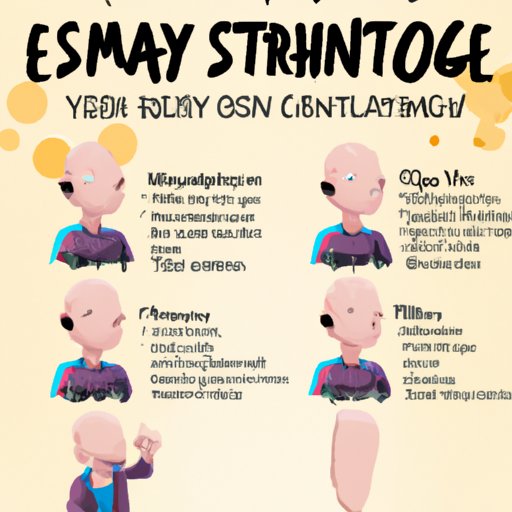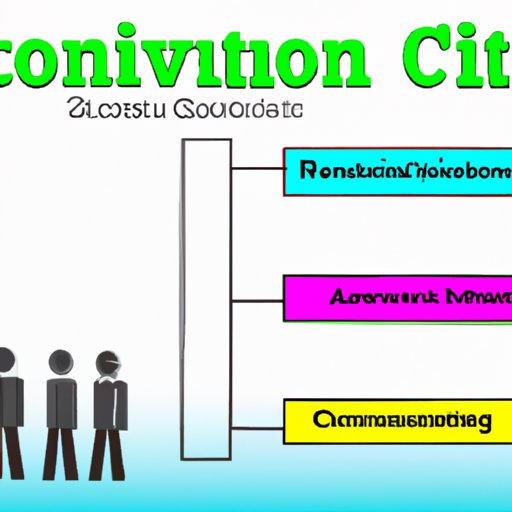
Exploring the Definition of a Character in Writing
A character is a person or other entity in a story. They are essential for any narrative, whether it’s fiction, nonfiction, or even a play. Without characters, there would be no one to tell the story or to interact with one another. Characters are often used to explore themes, create tension, and drive the plot forward.
Definition of Character in Writing
A character can be defined as an individual in a narrative who drives the plot forward. These individuals may or may not exist in real life, and they can be protagonists, antagonists, or minor characters. Characters are usually developed through their interactions with other characters, as well as through their thoughts, emotions, and motivations.
Types of Characters
Characters can be classified into different types, depending on their role in the story. The protagonist is the main character of the story, and they are usually the ones who are tasked with resolving the central conflict. The antagonist is the character who stands in opposition to the protagonist, and they often represent the forces of evil, chaos, or destruction. Minor characters are those who do not have a major role in the story, but they can still provide insight into the protagonist or the setting.
An Introduction to Character Development
Character development is an essential part of storytelling. It involves fleshing out characters so that readers can understand them better and become emotionally invested in the story. This can be accomplished through characterization, which is the process of revealing a character’s personality traits, motivations, and relationships.
The Role of Characterization
Characterization is a key component of character development. It involves giving characters unique attributes, such as physical characteristics, habits, mannerisms, and speech patterns. It also involves exploring their inner lives, such as their hopes and fears, dreams and desires, and motivations. Through characterization, readers can gain an understanding of a character’s personality and their role in the story.
Creating Personality Traits
When creating a character, it’s important to give them distinct personality traits. These can include traits such as loyalty, intelligence, ambition, stubbornness, and more. It’s important to think about how these traits will affect the character’s behavior and how they interact with other characters. For example, if a character is loyal, they may be willing to help others even when it puts them in danger.
Developing Individuality and Depth
In addition to creating personality traits, it’s important to develop a character’s individuality and depth. This can be done by exploring their past experiences, their relationships, and their values. By understanding a character’s backstory and how it has shaped them, readers can gain a better understanding of their motivations and decisions.

How to Create an Engaging Character
Creating an engaging character involves giving them a clear goal, developing their relationships with other characters, and crafting dialogue that reflects their personality traits. All of these elements work together to make a character memorable and relatable.
Defining Goals and Motivations
It’s important to give each character a clear goal or desire. This can be something as simple as wanting to find love or as complex as trying to overthrow a government. This goal should be the driving force behind the character’s actions and decisions. It should be something that keeps them motivated and focused throughout the story.
Establishing Relationships with Other Characters
Relationships are an important part of any story, and they can help to build tension and create conflict. When creating relationships between characters, it’s important to think about how they will interact with one another. Are they friends, enemies, rivals, or something else? How do their personalities clash or complement each other? What kind of history do they share? Exploring these questions can help to add depth to your characters and their relationships.
Crafting Dialogue for Your Character
Dialogue is an important tool for bringing characters to life. It can help to reveal a character’s personality, deepen relationships, and move the plot forward. When crafting dialogue, it’s important to keep in mind the character’s individual traits, as well as how they interact with other characters. Pay attention to the words they choose, the tone of their voice, and their body language. All of these elements can help to make the dialogue more realistic and engaging.
Crafting a Memorable Character Arc
A character arc is a journey of change and growth. It involves introducing challenges and obstacles that the character must overcome in order to reach their goal. This can involve psychological changes, such as learning new skills or gaining a new perspective, as well as physical changes, such as gaining strength or courage. Crafting a memorable character arc involves incorporating elements of conflict, tension, and resolution.
Introducing Change and Growth
Change and growth are essential components of a character arc. The character should experience some kind of transformation over the course of the story. This could be a shift in mindset, a newfound strength, or a realization that leads them to take a new path. It’s important to think about how this change will affect the character’s relationships and their goals.
Incorporating Conflict
Conflict is an important part of any story, and it should be present in a character arc as well. This could be internal conflict, such as a struggle with self-doubt or conflicting desires, or external conflict, such as a struggle against an opposing force. Conflict helps to create tension and propel the story forward.
Building Tension
Tension is what keeps readers engaged and invested in the story. It can be built through suspenseful scenes, unexpected twists, and moments of uncertainty. When crafting a character arc, think about how you can introduce tension and increase it as the story progresses.
The Role of Characters in Narrative Structure
Characters play an important role in the structure of a story. They can help to establish the setting, drive the plot forward, and add subtext. By exploring a character’s backstory, motivations, and relationships, writers can create a narrative that is both engaging and meaningful.
Establishing Setting
Characters can be used to establish the setting of a story. Their actions and interactions can give readers a sense of place, as well as the culture, customs, and values of the people who inhabit it. This can help to ground the story and give it a sense of realism.
Driving Plot
Characters are also essential for driving the plot forward. Through their goals, motivations, and relationships, they create conflict and tension that keep readers engaged. As the story progresses, characters should face increasing obstacles that challenge them and push them to grow.
Adding Subtext
Characters can also be used to add subtext to a story. By exploring their thoughts and feelings, readers can gain insight into the underlying themes and messages of the story. This can help to make the story more meaningful and thought-provoking.

Analyzing Character Motivation and Conflict
In order to create compelling characters, it’s important to analyze their motivations and conflicts. This can involve identifying their goals, understanding their conflicts, and examining the consequences of their actions. By understanding these elements, writers can craft characters that feel realistic and engaging.
Identifying Goals
It’s important to identify a character’s goals and desires in order to understand their motivations. This can involve exploring their backstory, as well as their relationships with other characters. Knowing a character’s goals can help to create tension and propel the story forward.
Understanding Conflict
Conflict is an essential part of any story, and it should be present in a character’s arc as well. This could be internal conflict, such as a struggle with self-doubt or conflicting desires, or external conflict, such as a struggle against an opposing force. Understanding a character’s conflicts can help to create tension and move the story forward.
Examining Consequences of Actions
It’s also important to examine the consequences of a character’s actions. This can help to create a sense of realism, as well as add depth and complexity to the story. By exploring the consequences of a character’s decisions, readers can gain a better understanding of their motivations and goals.
Conclusion
Characters are essential for any narrative, and crafting engaging characters requires understanding the basics of character development. This involves exploring the definition of a character, introducing personality traits, developing relationships, crafting dialogue, and analyzing motivation and conflict. By following these steps, writers can create characters that feel real and alive.
(Note: Is this article not meeting your expectations? Do you have knowledge or insights to share? Unlock new opportunities and expand your reach by joining our authors team. Click Registration to join us and share your expertise with our readers.)
